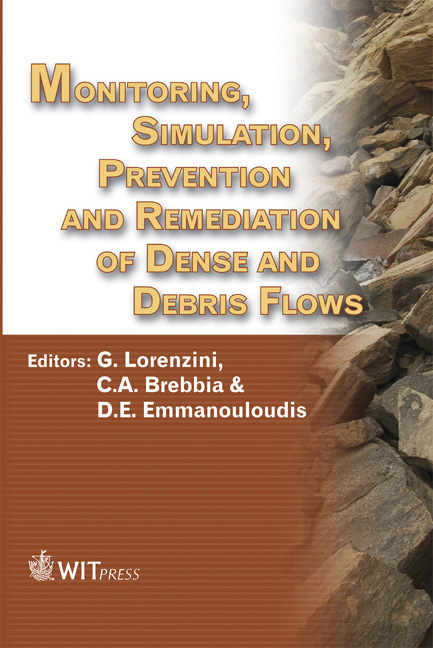Method Of Debris Flow Prediction Based On A Numerical Weather Forecast And Its Application
Price
Free (open access)
Transaction
Volume
90
Pages
10
Published
2006
Size
5,202 kb
Paper DOI
10.2495/DEB060041
Copyright
WIT Press
Author(s)
F. Wei, K. Gao, P. Cui, K. Hu, J. Xu, G. Zhang & B. Bi
Abstract
Debris flow is one of the main natural hazards in mountains areas of China, especially in south-western China. Because the region with debris flow hazard is wide and the number of debris flow valleys is great, debris flow prediction is an important measure of debris flow disaster mitigation. A prediction method of debris flow based on a numerical weather forecast was carried out. According to the conditions of debris flow formation including energy, incompact debris and inducing factors (rainfall), the relative height, stratum, fault, land use, total rainfall consisting of effective antecedent precipitation and forecasting precipitation, and maximum precipitation intensity of 1 hour were selected as factors for prediction of debris flow. A prediction model was set up with these factors and extension theory which is a new kind of knowledge system based on the concepts of matter-element and extension set. In the model, total rainfall and maximum rainfall intensity of 1 hour obtained by a numerical weather forecast are the principle input variables. South-western China including Sichuan, Yunnan, Guizhou and Chongqing which has heaviest debris flow disasters in China was selected as a case study region. An application system of debris flow prediction based on the model was developed with GIS (ArcGIS) for the study region. Keywords: debris flow, prediction, numerical weather forecast, south-west of China.
Keywords
debris flow, prediction, numerical weather forecast, south-west of China.





